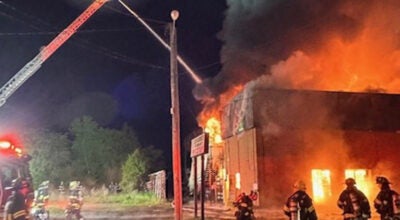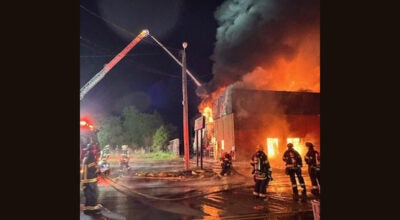Panel addresses COVID-19 issues
Published 9:04 pm Thursday, April 23, 2020
|
Getting your Trinity Audio player ready...
|
Area doctors discussed the basics about COVID-19 while addressing concerns people have about the virus, mental health and what lies ahead during a 90-minute virtual forum hosted by Eastern Virginia Medical School Thursday.
Dr. Edward C. Oldfield, a professor of internal medicine at EVMS and an infectious disease specialist, outlined the origins of COVID-19, its symptoms and the future of the virus and testing for the virus and for its antibodies.
“Are we testing enough? The answer is no,” Oldfield said. “An average of 146,000 to 150,000 people are being tested every day, about 3.6 million total. A Nobel Prize winning economist came out today (Paul Romer) and said he felt that we needed 30 million tests per week to completely open the economy.”
Oldfield noted that 20 percent of those tested have come back positive for COVID-19, a rate that’s as high as 55 percent in New York City.
“When you have these very high rates of positivity in testing, it means you’re really missing a lot of people,” Oldfield said. “So it suggests that new infections may have plateaued, and not because we’ve hit a ceiling of cases, but it’s a ceiling of testing capacity. We need to at least triple the amount of tests that we’re doing.”
He said an antibody test, which measures the protective immune response that people develop after an infection, could be important.
“It could tell us which health care workers and first responders were immune and could return to work,” Oldfield said. “We could staff nursing homes with immune workers, we can decide who can return to work safely. We could select donors for immune plasma, and we could determine serial prevalence, whether there’s huge herd immunity, which would prevent another significant outbreak.”
Dr. Michael Hooper, vice president of medical affairs for Sentara Norfolk General Hospital, said the burden of COVID-19 cases in Virginia and in the United States are spread across many different age groups, but the burden of hospitalizations “goes up pretty significantly as age increases.”
Hooper said there has been a flattening of the curve on COVID-19 cases in the country and the state, and as noted in the number of people in Sentara’s hospitals, along with the number in intensive care and on ventilators. He said the virus is not following the exponential steep rise that Sentara was concerned about and preparing for early on.
“That’s really a sign that all of the sacrifices made in the community to social distance, to not congregate, have had a real effect in terms of what we’re seeing at the hospital, and what we’re seeing in terms of the burden of disease.”
Hooper said Sentara Healthcare is preparing for a longer-term presence of COVID-19 “and a lower, and hopefully manageable level,” while also preparing for elective surgeries to resume. Sentara is also looking at the future of health care through increasing telehealth capabilities, while making sure it can distance and protect people in its hospitals and facilities.
He cautioned against the gathering of large crowds and removing social distancing measures too early, saying there could be a rapid rise in COVID-19 cases if those things happen.
However, Hooper noted significant uncertainties with antibody testing, though he said promising work is being done. Oldfield also said there are no proven treatments for COVID-19.
Dr. Doug Mitchell, an EVMS professor of pediatrics and the medical director of Children’s Hospital of The King’s Daughters Medical Group, said the illness has been relatively minor in the vast majority of children, and noted the school closures helped cancel out the spread of other illnesses like the seasonal flu.
CHKD has had just three positive COVID-19 tests since it started testing April 6, with just one in a patient younger than 18. Mitchell said he is concerned with children missing their immunizations.
“We want to make sure that we keep immunizations going so that we can prevent the spread of other severe illnesses like chickenpox and measles,” Mitchell said.
Dr. Nancy Welch, director of the Chesapeake Health Department, addressed what she said were perceptions versus reality about COVID-19 — such as asymptomatic people being able to spread coronavirus and the purpose of mask wearing. That, she said, isn’t to protect someone from getting the virus. Rather, it helps prevent the virus from getting out of people and into the environment.
Dr. Serina Neumann, a professor of psychiatry and behavioral sciences at EVMS, noted that 45 percent of people reported negative mental health consequences since stay-at-home orders have been in effect.
She encouraged people to rest and take frequent breaks, make nutritious choices and hydrate, keep a regular sleep schedule and continue to stay connected with people. She said physical distancing does not have to mean social disconnecting. There can be numerous signs of someone struggling with mental health issues during the coronavirus pandemic. Neumann said there are resources on the EVMS website to help support people.
The panel also addressed numerous submitted questions from the public, including ones about how the virus is transmitted, when it would be safe for grandparents to visit grandchildren and possible, experimental preventive measures.
One question asked about the possibility of preventing coronavirus by aerosolizing with hydrogen peroxide. Hooper said he would be concerned about damage to the nasal membranes, and that there is no data to support doing it. Mitchell said CHKD uses hydrogen peroxide on many surfaces and materials to help kill the virus, but “there are a lot of unfortunate suggestions out there on the internet in terms of using various cleaning solutions to try and kill the virus on a person. And while it may kill the virus, it may do a lot of damage to your body.”
Regarding whether teachers and students should wear PPE when they return to school, Welch said it was too early to tell.
Another question dealt with confusion over symptoms and when and if to seek medical attention. Oldfield said in about 70 to 80 percent of positive cases, people would have a dry cough, malaise, muscle aches and fatigue. A smaller number of people may notice a loss of taste or smell, and about 10 to 15 percent of people will have symptoms such as a runny nose and sore throat. About 5 to 10 percent of people with COVID-19 will experience symptoms such as nausea, vomiting and diarrhea.
The panel addressed a question on when it would be safe for grandparents to see their grandchildren again. Mitchell said when the COVID-19 spread is low enough from the public health perspective, and if the grandchildren have been healthy, that would be important. However, without adequate testing, “there’s no definite way to know for certain.”
Oldfield said it would depend on whether everyone involved has kept up with social distancing and no one involved has had COVID-19 symptoms. He cautioned that it is a risk, especially for elderly with other medical problems.
Hooper said it is the type of visit that matters.
“Having grandkids in your lap in the home, sharing spaces and surfaces is different than going on a walk at the park when you’re not touching and holding,” Hooper said. “And it also matters if the child is one that can wear a mask and wash their hands, or if they’re at an age where they can’t do that sort of thing yet.”






